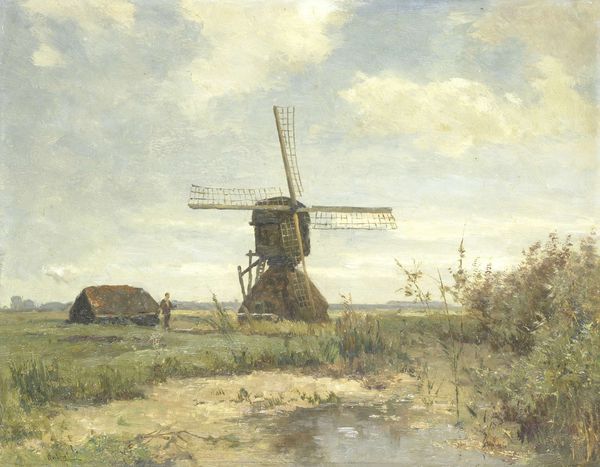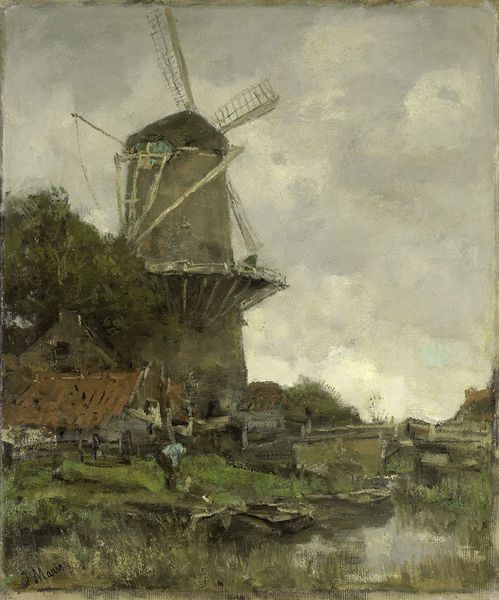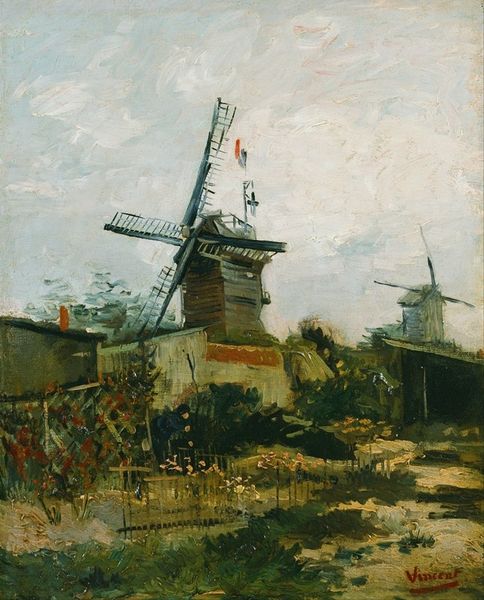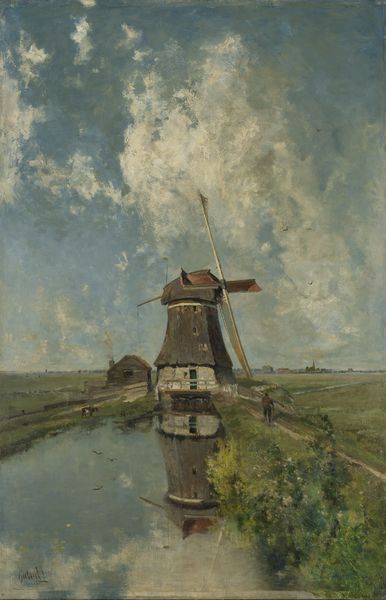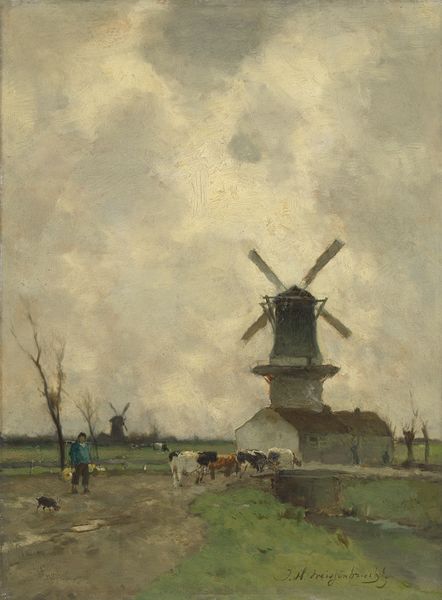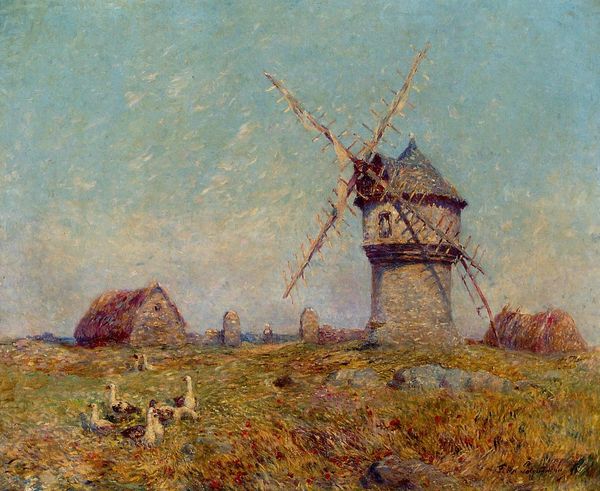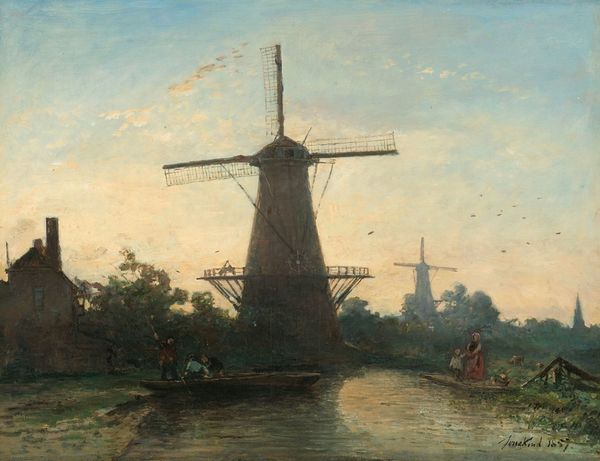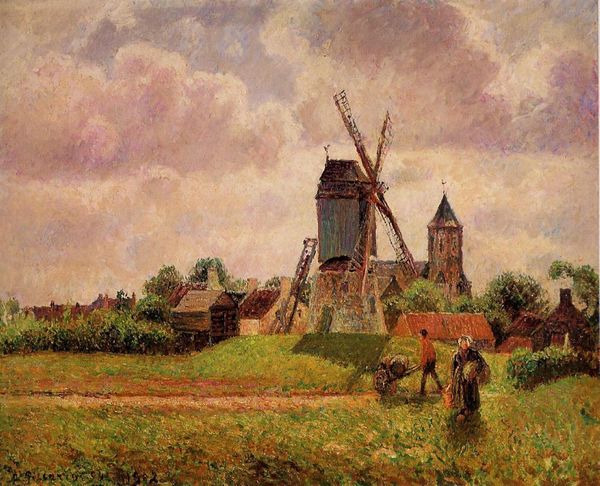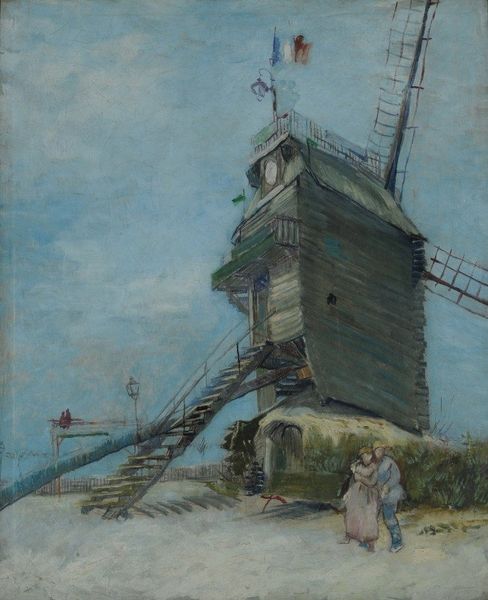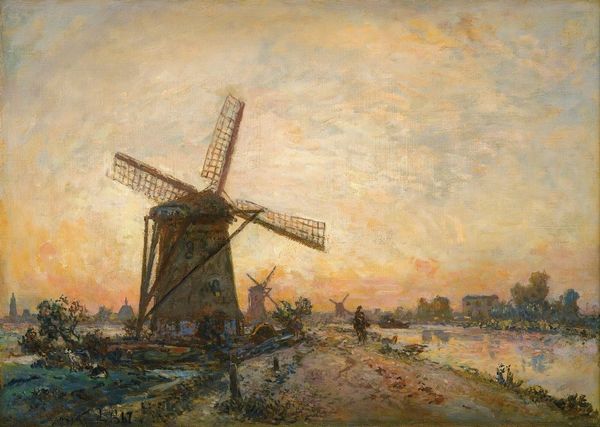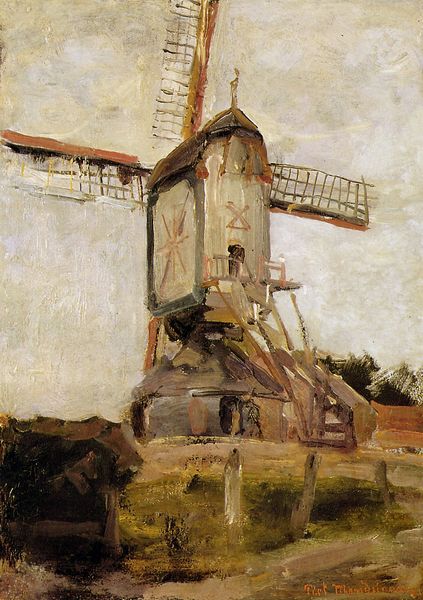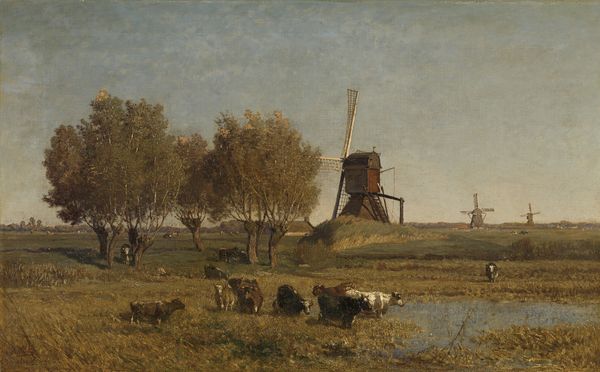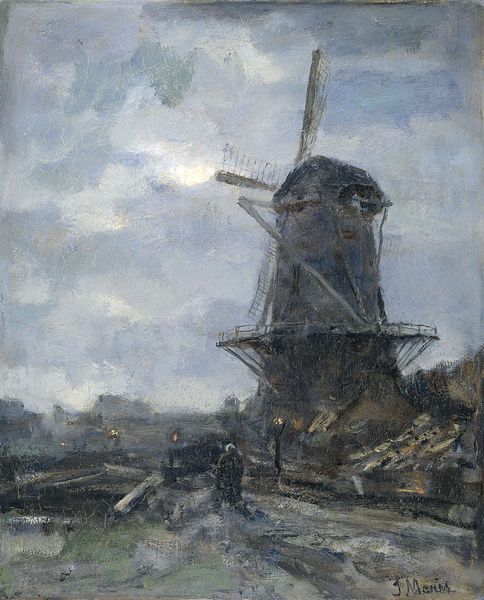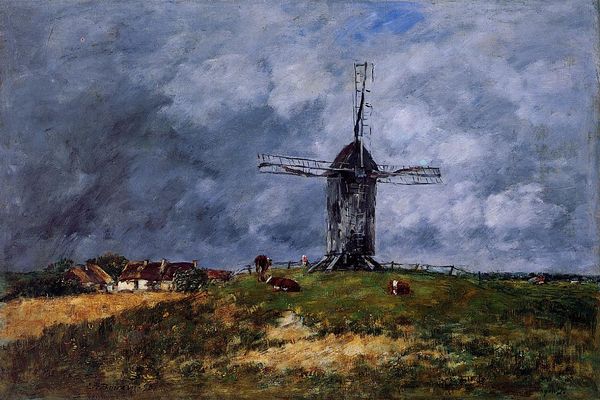
plein-air, oil-paint
#
impressionism
#
impressionist painting style
#
plein-air
#
oil-paint
#
landscape
#
impressionist landscape
#
oil painting
Dimensions: overall: 40.5 x 32 cm (15 15/16 x 12 5/8 in.) framed: 66 x 57.8 x 8.3 cm (26 x 22 3/4 x 3 1/4 in.)
Copyright: National Gallery of Art: CC0 1.0
Curator: Here we have Jean-Charles Cazin’s "The Windmill," completed sometime after 1884. A plein-air piece showcasing the French countryside. Editor: The mood strikes me as rather melancholic, almost reminiscent of a hazy, fading memory. There’s a weightiness to the clouds pressing down on the scene. Curator: Cazin often depicted rural life, and in that context, this scene might reflect the burdens shouldered by the working class tied to agriculture and traditional modes of production. Editor: Indeed. Consider the actual materiality of that windmill, those weighty, aged beams of wood, slowly ground down by labor and wind. Curator: The two figures sitting along the path, presumably a mother and child, emphasize those relationships to labor. They're at the periphery, almost removed. Their identities as subjects take a backseat to the cyclical demands of agriculture. We might read that windmill not just as a practical tool, but also a symbol of social determinism. Editor: Absolutely, it's about power, isn't it? Not just literal wind power, but the power dynamics embedded in these landscapes. Who benefits from this labour? And under what conditions? How is materiality implicated in modes of social and political repression? Curator: Cazin isn't overtly critical, it must be noted, he does have an engagement with nature that aligns to his impressionist sensibilities and gives it an undeniably pastoral feeling. There are undeniable nuances at play, especially when considering how labor impacts both those in control of and subject to labor. Editor: Precisely, he presents these harsh realities while also demonstrating the intrinsic and sometimes contradictory connection to the beauty of our environment and work, of materials shaped, not untouched, by labour. It makes me consider the romanticized versions of countryside labour often depicted by urban elites and to look deeper here for its grittier depiction. Curator: A nuanced piece then. Thanks for your insights. Editor: My pleasure, an important artwork, from material reality to larger structural understanding.
Comments
No comments
Be the first to comment and join the conversation on the ultimate creative platform.
